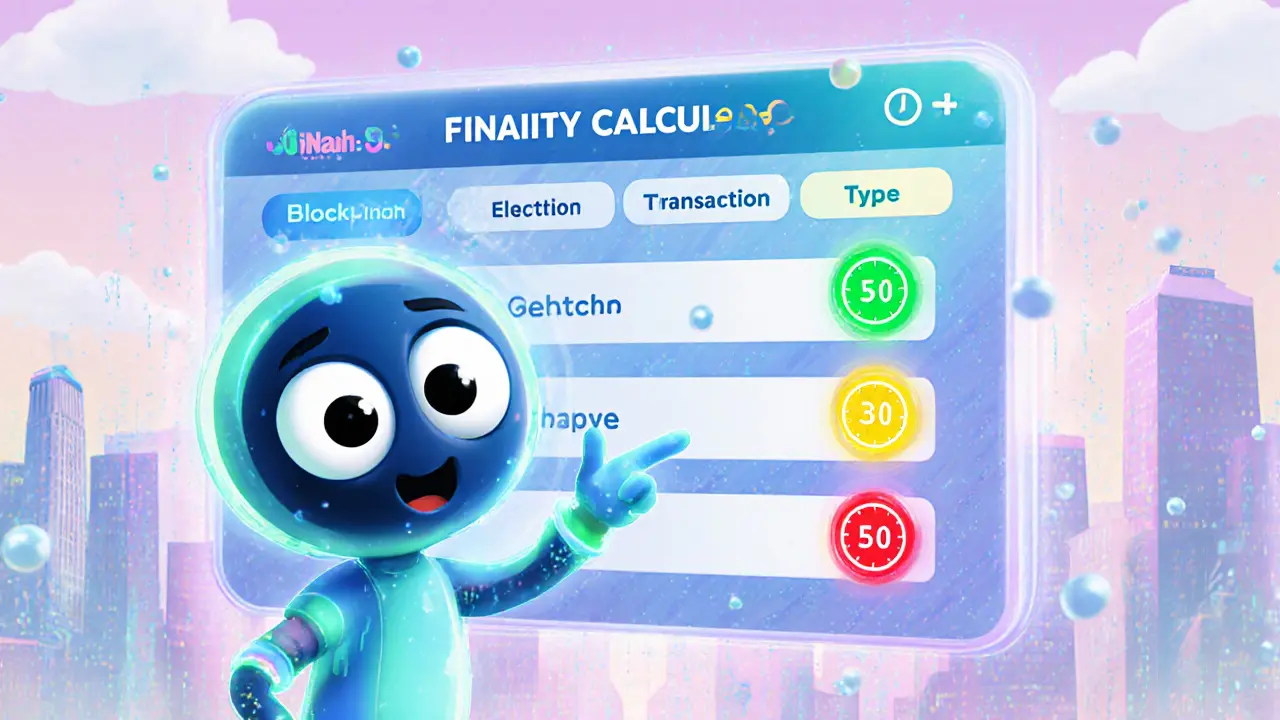Instant Finality Explained: Fast, Secure Blockchain Settlement
When discussing Instant Finality, the guarantee that a transaction becomes irrevocable on a blockchain within seconds. Also known as quick finality, it eliminates the waiting period that most proof‑of‑work chains impose. Instant finality is the backbone of real‑time finance, gaming, and voting apps that can’t afford long delays or the risk of rollbacks.
Achieving this speed hinges on the underlying consensus mechanism, the set of rules nodes follow to agree on the next block. Proof‑of‑stake designs like Tendermint or HotStuff embed finality gadgets, protocol modules that lock in a block after a few votes, turning a probabilistic confirmation into a deterministic one. When a gadget signals finality, the network treats the block as final, cutting the confirmation window from minutes to a handful of seconds.
Key Concepts Behind Instant Finality
Layer‑2 rollups add another layer of speed. By batching many transactions off‑chain and then posting a single proof to the base layer, rollups inherit the base chain’s finality guarantees while delivering sub‑second user experiences. This synergy between layer‑2 solutions, scaling frameworks that process transactions off the main chain and the base chain’s finality gadget creates a smooth pipeline: users see a transaction confirmed instantly, and the rollup later anchors that state securely.
Instant finality also reshapes security models. In traditional proof‑of‑work chains, an attacker could try a 51% reorganization within the confirmation window. With instant finality, once the gadget finalizes a block, reorgs become mathematically impossible without controlling the entire validator set, raising the economic barrier for attacks. This shift is why many blockchain voting projects, like the ones highlighted in our recent analyses, prefer finality‑centric chains: they need immutable results as soon as a vote is cast.
From a developer’s perspective, building on a finality‑first chain simplifies user experience design. Wallets no longer need to display “unconfirmed” balances, and dApps can trigger actions—like token swaps, NFT minting, or game rewards—right after a transaction lands, without waiting for additional confirmations. The net effect is a more intuitive product that feels as responsive as traditional web apps.
Below you’ll find a curated set of articles that dive deeper into each of these pillars. Whether you’re curious about how consensus algorithms achieve instant finality, want a technical walkthrough of finality gadgets, or are looking for practical advice on integrating layer‑2 rollups, the collection offers actionable insights and real‑world examples to help you stay ahead of the curve.

